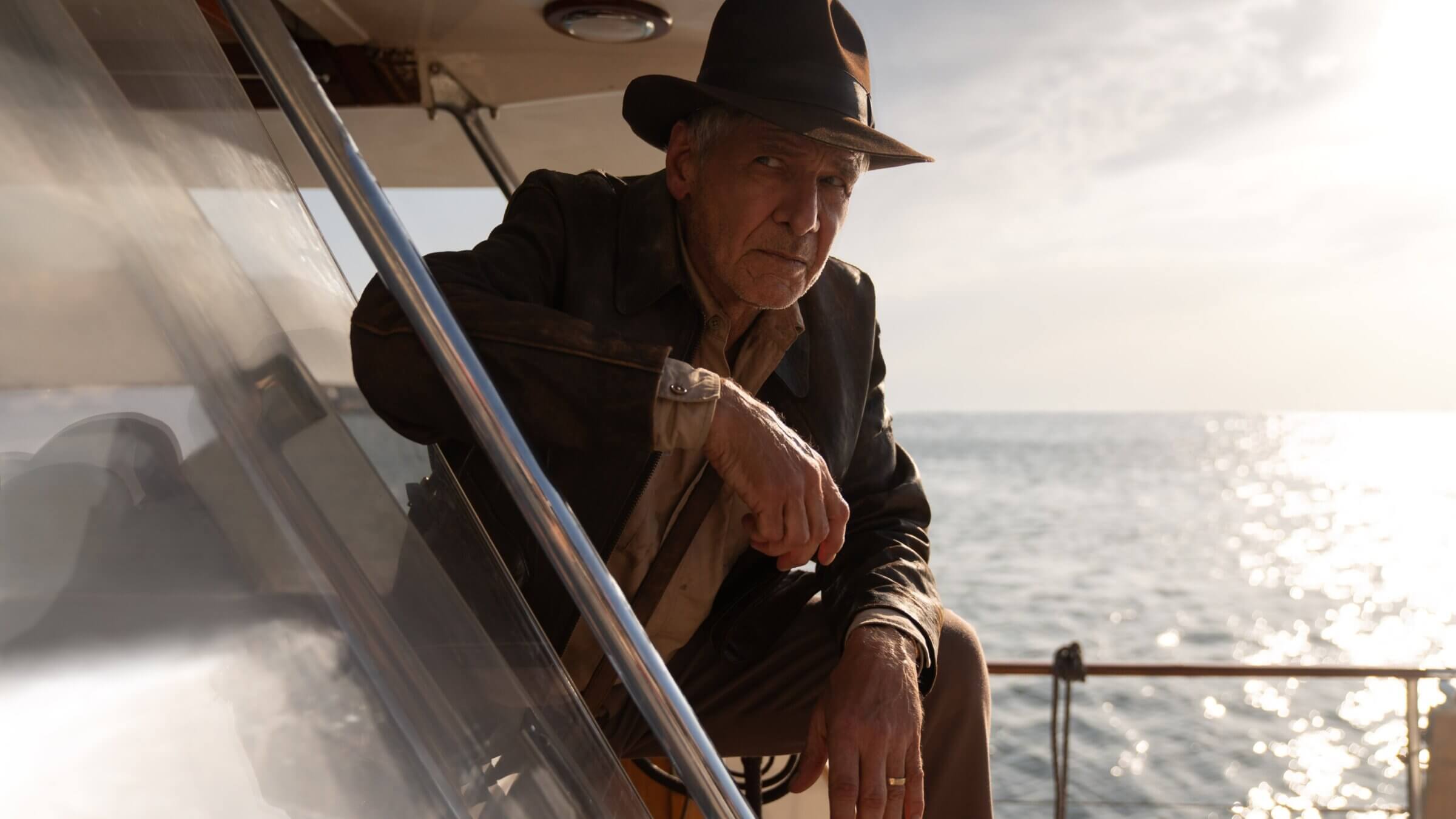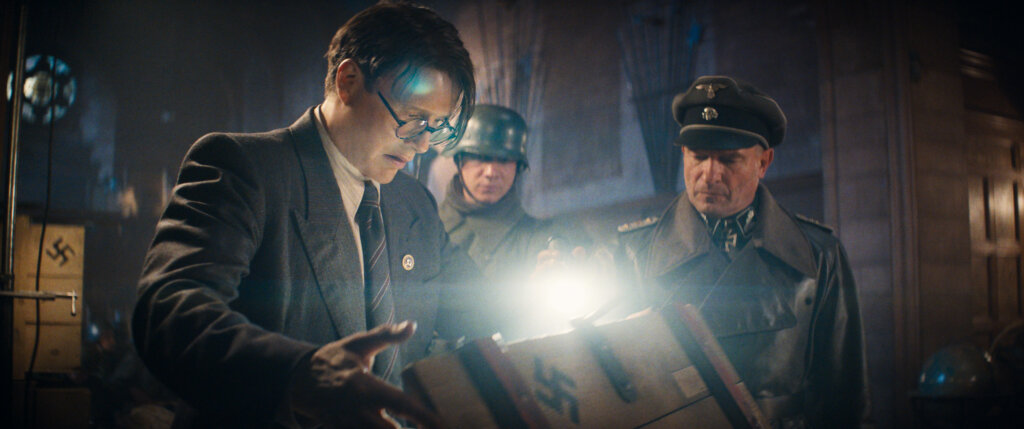Same old Indiana Jones is still fighting the same old Nazis — it almost got a lot more interesting
The newest Indiana Jones flick brings a classic bad guy into the future

Harrison Ford still has that Indiana Jones charm at 80. Courtesy of Disney
Indiana Jones first came onto the scene fighting Nazis, and he’ll go out the same way. In 1981’s Raiders of the Lost Ark, the graverobbing archeologist kept Nazis from getting the magical Ark of the Covenant. In The Last Crusade, it’s Nazis and the Holy Grail. And in what is supposed to be the final installment in the Indiana Jones franchise, a much-older Indy battles Nazis over the Antikythera, an astronomical dial created by Archimedes — and made of solid gold.
Basically, not much has changed for Indiana Jones. Admittedly, the relic in question is more niche than the Ark or the Holy Grail — but otherwise, The Dial of Destiny is right in the mold of every other Indiana Jones installment, a swashbuckling adventure film.
Except, of course, that Harrison Ford is old now — though, let’s be clear, he looks pretty good for 80 and even gets a shirtless scene, albeit in rather saggy boxers — and so is Indiana Jones. He’s now a cranky professor of archeology at Hunter College who yells at the hippies in the next apartment over when they wake him up by blasting the Beatles to celebrate the moon landing. That’s right, it’s 1969.
Which brings us back to the Nazis. How is Indy still fighting Nazis in 1969?
Well, the movie opens with the much-talked-about de-aging of Ford for a flashback to WWII, with Indiana Jones fighting on top of a Nazi train full of plundered art and relics. He’s there to steal the Lance of Longinus, the spear that drew Jesus’s blood, but upon realizing it’s a fake, he snags the Antikythera — or half of it — out of the hands of a German scientist.

By 1969, that same Nazi scientist (Mads Mikkelsen) has been recruited by the U.S. government to work at NASA — as many Nazi scientists actually were, in one of the few pieces of actual history in the movie — and is suddenly being feted by the president for putting a man on the moon. But he doesn’t seem to care much about space travel; he’s more interested in time travel. He wants to return to Nazi Germany to alter history, and he’s convinced that Archimedes’ dial can bring him there.
Jones’ goddaughter Helena, played by Phoebe Waller-Bridge stepping far outside her usual genre, shows up to steal the dial to sell on the antiquities black market. But the Nazis are hot on her tail and she and Jones end up working together to try to keep the dial out of the Nazis’ hands.
They roam from Morocco to Greece to Sicily to find the missing half of the Antikythera, and meet a bunch of Indy’s old pals from his adventure days. They’re all just as old and infirm as he is, which is a running gag; Antionio Banderas has a cameo as Indy’s treasure-diving buddy, except he now has a bum leg and walks with a cane, and John Rhys-Davies’ Sallah, a character from previous films, is now an NYC cab driver. In a way, they yearn for their past heydays as much as the Nazis.
The movie is much more focused on the action set pieces than it is on actual stakes, emotional or otherwise, and while that is, in a way, hewing to tradition — Raiders of the Lost Ark’s plot developed around ideas for stunts — it can make it a little hard to care who wins. Even the Nazis are relying entirely on the name and the gut punch of the swastika armband for their big-baddie energy; of course we all know Nazis are Bad, but no one ever says why the heroes are so passionate about thwarting them.
I’m not particularly worried about this from an educational perspective — this is not an educational film. But it was a missed opportunity to make the movie just a little more compelling. Especially since the writers hinted at an idea for a more complex plot; spoilers ahead.
Near the end of the movie, the Nazi scientist announces what exactly he wants to do in the past: Kill Hitler. The Allies didn’t win the war, he says — Hitler lost it. But he “lit a fire that could have burned 1,000 years.” Killing Hitler is a pretty unexpected goal for a Nazi! It’s a great twist, and it could have added a really intriguing historical revisionist element to the movie — and could have made the evil threat so much more, well, threatening. Especially given that in the real world of 2023, it’s clear that Hitler’s fire is, in fact, still burning.
But unfortunately, that revelation comes near the end of the movie, and is quickly irrelevant. Of course, it’s not the worst thing to reinforce that Nazis are always the Bad Guys, no matter what. But it’s also simply more interesting to explain, and rather lazy not to.
Still, the overall message, simplistic though it may be, still holds: Even one bad seed can birth something dangerous. And given the state of the world today, with conspiracy theories we once believed confined to dark, niche corners of the internet now finding their way into the mouths of politicians and television hosts, its moral seems surprisingly prescient for a simple action flick.
“Yesterday belongs to us,” intones our Nazi Bad Guy ominously. But thankfully, in the real world, it’s always today. Which means even modern-day Nazis are old-fashioned and out of touch.
















